 |
by Andrew Liszewski on (#6XS7X)
Midea is recalling around 1.7 million of its U and U Plus window air conditioners sold in the US, plus another 45,900 sold in Canada. The air conditioners launched in 2020 with a unique U-shaped design that allowed windows to close with the unit installed, reducing the amount of noise heard while they were running. [...]
|
The Verge
| Link | https://www.theverge.com/ |
| Feed | http://www.theverge.com/rss/index.xml |
| Updated | 2025-12-24 11:19 |
 |
by Sheena Vasani on (#6XS7Y)
If you missed your chance the first time around, you now have another opportunity to pick up Nintendo's GameCube Controller for the Switch 2. It's is available once again from the My Nintendo Store for $64.99, giving fans another shot at securing the wireless gamepad. To place your order, you'll need to be logged into [...]
|
 |
by Cameron Faulkner on (#6XS80)
While Bluesky and Mastodon are both decentralized social media networks, they operate on different protocols, ActivityPub and AT Protocol. You might not ever know that unless you're our kind of nerd and / or someone who's trying to expand their reach on other platforms without starting from scratch. Tools like Bridgy Fed exist for broadcasting [...]
|
 |
by Charles Pulliam-Moore on (#6XS7Z)
Lionsgate was always going to need to take the John Wick franchise in a new direction if it wanted to keep the film series going after the inevitable exit of its central star. A spinoff series came and went with a telling lack of fanfare that spoke, in part, to how John Wick stories feel [...]
|
 |
by Sheena Vasani on (#6XS4M)
Let's face it - cleaning is the worst, and most of us would rather do literally anything else. If you ever wished somebody else would take care of it for you, today's deal on the Narwal Freo X Ultra is worth a look. The robot vacuum / mop hybrid does most of the hard work [...]
|
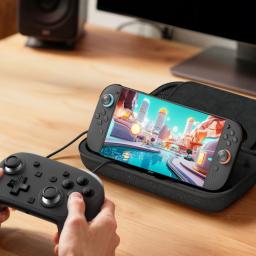 |
by Andrew Liszewski on (#6XS4N)
Belkin has announced a new collection of accessories for the recently launched Switch 2, including a case that does more than protect the console and keep cartridges organized. There's also a 10,000mAh battery inside the case that Belkin says has enough capacity to fully charge the console 1.5 times. We haven't reviewed the Switch 2 [...]
|
 |
by Jess Weatherbed on (#6XS4P)
Wacom has relaunched its popular Cintiq pen display tablet lineup with a modern new look, cramming more powerful screens into a slimmer, boxier design. The redesign is visually similar to the updates made to Wacom's flagship Cintiq Pro series in 2022, making the mid-tier Cintiq versions more attractive and portable for hobbyists and entry-level creatives. [...]
|
 |
by Charles Pulliam-Moore on (#6XS4Q)
After dropping a series of very promising teasers, FX has finally released a trailer for Noah Hawley's Alien: Earth series. Set before the original Alien film, Alien: Earth follows a team of researchers from Earth set out to learn what's hiding on a space ship that happens to crash land onto their planet one day. [...]
|
 |
by Nilay Patel on (#6XS4R)
Today, I'm talking with Runway CEO and cofounder Cris Valenzuela. This one's special: Cris and I were live at an event in New York City last month hosted by Alix Partners, so you'll hear the audience in the background from time to time. Runway is one of the leading AI video generation platforms. The basic [...]
|
 |
by David Imel on (#6XS1S)
I'm standing outside the GameStop at Union Square in New York City on a beautiful Wednesday afternoon, with plenty of cars rolling by and people basking in the late spring sun. On the corner of E 14th Street and University Place, a line has formed around the block. Tonight is the official launch of the [...]
|
by Dominic Preston on (#6XS1T)
Apple's next generation of iPhones might support substantially faster wireless charging if new regulatory leaks are to be believed. A pair of MagSafe chargers with 45W power output and support for the upcoming Qi2.2 standard have been found on a Taiwanese certification site, suggesting that Apple is readying the hardware, possibly timed for the iPhone [...]
 |
by Tom Hawking on (#6XRZD)
Moving is stressful at the best of times, and while moving to a new country is exciting, it also adds a layer of logistical complications, especially when it comes to tech. As someone who's tackled several international moves - most recently, from my native Australia to the US in mid-2023 - here are some tips [...]
|
 |
by Victoria Song on (#6XRZC)
Doomscroll on TikTok long enough, and you'll come across an ad for AI video apps. In one ad, a stereotypically nerdy girl puckishly smirks as she uploads a picture of herself and her much more handsome crush. Boom - suddenly, thanks to AI, they're smooching. In another, I'm shown a woman in a blouse and [...]
|
 |
by David Nield on (#6XRZE)
The best apps are those that save you a significant amount of time or genuinely fire up your imagination. Room planners make a strong claim to do both. These tools are able to give you 2D or 3D visualizations of your new home quickly and easily, letting you dream about the sort of spaces you [...]
|
 |
by Dominic Preston on (#6XRZF)
OnePlus has launched the Pad 3, the first tablet outside of China powered by the flagship Snapdragon 8 Elite chipset. It's been upsized since the Pad 2, with a larger 13.2-inch display, but that's allowed OnePlus to make it impressively thin at just 5.97mm. That big screen is LCD, rather than OLED, but the 144Hz [...]
|
 |
by Andrew J. Hawkins on (#6XRZG)
Lime, the shared scooter and bike company, is getting ready for another busy summer by cozying up to one of its biggest supporters, Uber. The two companies recently signed a new multiyear agreement that allows Uber to continue to feature Lime's shared bikes and scooters on its ridehail app. As part of the deal, Lime's [...]
|
 |
by Jess Weatherbed on (#6XRXD)
Future Amazon orders may be delivered to your door by a humanoid robot workforce. The Information reports that Amazon is developing AI software that will enable robots to operate as package delivery workers that are ferried around in Rivian electric vans, and will soon be ready to start real-world testing at a new facility. Citing [...]
|
 |
by Dominic Preston on (#6XRXE)
The auto industries in both the US and Europe could come to a standstill within weeks thanks to China's ongoing restrictions on exports of rare earth minerals and magnets. Several European car part manufacturers have already halted production lines according to the European Association of Automotive Suppliers (CLEPA). China introduced strict export controls on rare [...]
|
 |
by Andrew J. Hawkins on (#6XRT2)
Volvo is looking to boost its reputation for safety with the release of a new multi-adaptive safety belt" that uses real-time data from the vehicle's sensors to better protect the person wearing it. Seatbelt technology hasn't changed much since Volvo patented one of the first modern three-point safety belts in the early 1960s. But cars [...]
|
 |
by Brandon Widder on (#6XRFF)
Update, June 5th: Walmart, GameStop, and BJ's Wholesale Club have seemingly sold out of their available Switch 2 inventory, at least online. Target is set to open online preorders on June 6th; however, it's also possible that some retailers still have units available in-store. The Switch 2 is here. Nintendo's latest console launches in the [...]
|
 |
by Charles Pulliam-Moore on (#6XRQS)
Though Universal's decision to split Wickeds story across two films seemed a little iffy at first, the new trailer for Wicked: For Good makes it look like the studio knows exactly what it's doing. Despite all of the vibrant colors and singing, there's a dark undertone in the new Wicked: For Good trailer that speaks [...]
|
 |
by Elizabeth Lopatto on (#6XRK8)
I have been watching, with some grim amusement, Elon Musk discovering the limits of being just another political donor. While he was at DOGE, he literally could control the Treasury and DOD - he effectively had the IT reins of the entire country, and could simply gut things he hated at will. There was a [...]
|
 |
by Jacob Kastrenakes on (#6XRK9)
Apple will have to continue allowing web links and external payment options in the App Store after its request to halt a judge's order was rejected today by a higher court. In April, a federal judge demanded that Apple begin allowing web links, cease restricting how links are formatted, and enable developers to offer external [...]
|
 |
by Andrew Webster on (#6XRKA)
Sony's showcase had a pleasant surprise: the debut trailer for 007First Light. The James Bond game - which has some definite Uncharted vibes - doesn't have a release date, but is slated to launch sometime in 2026. And while it was announced at a PlayStation event, the debut trailer confirms it's coming to Xbox, PC, [...]
|
 |
by Emma Roth on (#6XRKB)
PlayStation has announced Project Defiant, an arcade-style fighting stick that looks like it'll be perfect to use with the newly announced Mortal Kombat: Legacy Kollection. Sony teased the device during the State of Play on Wednesday before revealing more details in a blog post, which says the controller will let you wirelessly connect it to [...]
|
 |
by Antonio G. Di Benedetto on (#6XRKC)
The Wall Street Journal reports Meta is in talks with Disney and A24 to try and secure exclusive streaming content for a new headset it's developing. WSJ says Meta's new device is a glasses-like headset codenamed Loma," with an external puck you slip into your pocket. Meta is reportedly seeking new and existing licensed content [...]
|
 |
by Ash Parrish on (#6XRKD)
Not to be upstaged by all the Nintendo Switch 2 shenanigans, PlayStation decided to steal some of that attention back in the form of a major, nostalgia-fueled announcement: Final Fantasy Tactics is getting a remake and it's coming in September. Final Fantasy Tactics: The Ivalice Chronicles will take players back to a time when Final [...]
|
 |
by Emma Roth on (#6XRKE)
It sounds like Apple is preparing a big AirPods update for WWDC next week. A report from 9to5Mac says the company is working on a new feature that will let you control your iPhone or iPad's camera with your AirPods. The feature will reportedly allow you to snap a picture by tapping the stem of [...]
|
 |
by Adi Robertson on (#6XRF9)
The US Department of Commerce has renamed its AI Safety Institute to the Center for AI Standards and Innovation (CAISI), shifting its focus from overall safety to combating national security risks and preventing burdensome and unnecessary regulation" abroad. Secretary of Commerce Howard Lutnick announced the change on June 3rd, calling the agency's overhaul a way [...]
|
 |
by Allison Johnson on (#6XRFA)
Glance AI, a brand owned by mobile advertising company InMobi, has announced a partnership with the Samsung Galaxy Store to roll out its e-commerce platform to Galaxy phones in the US. The company's app centers around what it calls a Generative AI shopping platform," which is a serious contender for the most cursed phrase I've [...]
|
 |
by Justine Calma on (#6XRFB)
For three years in a row, California has added a record amount of new clean energy capacity. The amount of renewable energy and storage (i.e. batteries) added since 2020 is roughly equivalent to how much electricity the state has used on average on a daily basis - around 25,000 megawatts, according to new data from [...]
|
 |
by Tom Warren on (#6XRFC)
Microsoft's LinkedIn CEO, Ryan Roslansky, is taking on an expanded role at the software maker as the head of Office. Announced in an internal memo from Microsoft CEO Satya Nadella, the move is part of an AI shakeup that also sees Charles Lamanna and the business and industry Copilot (BIC) team move closer to the [...]
|
 |
by Hayden Field on (#6XRFD)
Reddit sued Anthropic on Wednesday in San Francisco superior court, claiming that the OpenAI rival had accessed its platform more than 100,000 times since July 2024, after Anthropic allegedly said it had blocked its bots from doing so. In the filing, Reddit calls Anthropic a late-blooming artificial intelligence (AI') company that bills itself as the [...]
|
 |
by Emma Roth on (#6XRFE)
Meta has revealed more information about Aria Gen 2, its experimental smart glasses designed to serve as a test platform for research about augmented reality, AI, and robotics. The glasses pack several improvements into their lightweight frame that could one day translate into consumer products, including an improved eye-tracking system that can track gaze per [...]
|
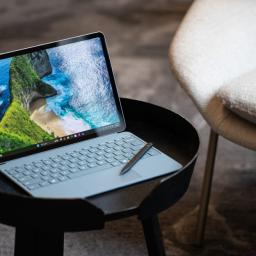 |
by Tom Warren on (#6XRA2)
I have always had a soft spot for the Surface Pro X. It was the thinner, lighter, and fanless Surface tablet that I had always wanted Microsoft to make, but when it came out nearly six years ago, Windows wasn't ready to handle the Arm chip inside - and vice versa. Sluggish performance and app [...]
|
 |
by Emma Roth on (#6XRA3)
As Nintendo gets ready for the launch of the Switch 2 on June 5th, it's now rolling out updates to even more titles than it previously announced. On a series of support pages spotted by Nintendo Life, Nintendo has revealed free updates meant to boost the performance across games on the Switch 2. Here's a [...]
|
 |
by Jess Weatherbed on (#6XRA4)
Figma is launching a new tool that can help AI models more effectively translate designs into fully coded applications. The product design company is giving LLMs and agentic coding tools like Copilot in VS Code and Claude Code more context about how designs are created in Figma via a new Dev Mode Model Context Protocol [...]
|
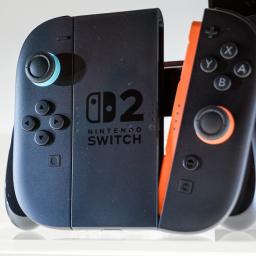 |
by Andrew Webster on (#6XRA5)
Reviewing a new video game console is usually an isolating experience. You get a device in the mail, hook it up to your television, and then play a bunch of games on your own or, occasionally, with the small handful of other people who have one in for review. You have to quickly test everything [...]
|
 |
by Charles Pulliam-Moore on (#6XRA6)
Fortnite is coming to the Switch 2 with some massive visual improvements and new features that are going to make it feel like a new game for the Nintendo crowd. While we knew that Fortnite would be playable on the Switch 2 at launch, today Epic announced all of the new features that are being [...]
|
 |
by Andrew Liszewski on (#6XR6S)
It's already June 5th in some parts of the world, which means the Nintendo Switch 2 is now out in the wild. Before the first reviews of the new console have appeared online, the YouTube channel ProModding has already shared a 17-minute teardown video of the handheld that includes close-ups of its custom Nvidia processor. [...]
|
 |
by Jess Weatherbed on (#6XR6T)
Reddit has a new privacy feature that gives users more control over the content that appears on their user profiles. The update announced by Reddit on Tuesday now allows users to selectively hide posts and comments from subreddits they participate in instead of having all their activities exposed to anyone who clicks on their profiles. [...]
|
 |
by Emma Roth on (#6XR6V)
The Washington Post could soon allow non-professional writers to submit opinion columns using an AI writing coach known as Ember, according to a report from The New York Times. The move is reportedly part of a broader initiative to open the paper to outside opinion pieces, including from other publications, Substack writers, and amateur columnists. [...]
|
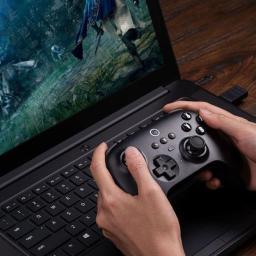 |
by Sean Hollister on (#6XR6W)
Sean Hollister is a senior editor here at The Verge. He runs news, writes reviews, and edits stories, and he specializes in, as he puts it, fun gadgets." He goes on to say, It hit me recently that I'm basically a big kid: I want to play. So now I try to spend most of [...]
|
 |
by Cameron Faulkner on (#6XR6Y)
Long before you even had the chance to buy a Switch 2, you've probably had some thoughts of what you'll be doing with the new console once it arrives. The logical answer is I will play Mario Kart World," and I respect those of you who feel that way. I, too, will be playing some [...]
|
 |
by Andrew J. Hawkins on (#6XR42)
Last month, Uber started testing new accounts for senior citizens, with a larger typeface, fewer buttons, and easier-to-follow instructions. Now, the company is ready to roll out its new senior accounts to the wider world. Starting today, Uber's senior accounts will be available to everyone in the US, as well as select areas in Taiwan, [...]
|
 |
by Andrew Webster on (#6XR41)
No Man's Sky is about to take flight on yet another new platform: developer Hello Games announced today that the sci-fi exploration game will be getting a free update that will enhance it for the Nintendo Switch 2, which launches on June 5th. The game came to the original Switch in 2022, and Hello Games [...]
|
 |
by Jess Weatherbed on (#6XR40)
Two transactional companies have teamed up to help app developers monetize their services outside of Apple's App Store. The new integration, launched by in-app payment system provider Paddle and the RevenueCat subscription platform, makes it easier for developers to unify subscriptions across web and mobile instead of building their own solutions from scratch. This launch [...]
|
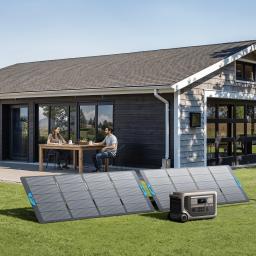 |
by Thomas Ricker on (#6XR3Z)
Anker just took the wraps off its new Solix F3000 power station that's portable enough for vanlife, and powerful and scalable enough for life at home. The system recharges in a variety of ways including by solar panels, an EV charger, and gas generator with full passthrough to simultaneously power most household devices. This giant [...]
|
 |
by Barbara Krasnoff on (#6XR44)
A few years ago, I was finally able to persuade my mother that she couldn't live alone in her house - the one in which my family had lived since the 1970s - and needed to move into a smaller co-op apartment in a nearby retirement community. But neither she nor I were aware how [...]
|
 |
by Jay Peters on (#6XR43)
AI Darth Vader was a huge hit in Fortnite, and now Epic plans to let creators make AI-powered NPCs for their own in-game experiences. But a senior Epic exec says that creators should expect a "learning curve" when using them - something Epic had to figure out on its own. The AI Vader that Epic [...]
|